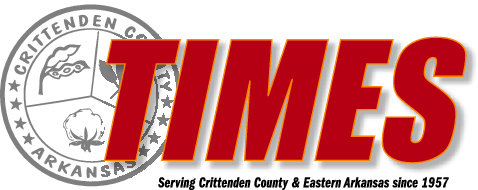Ex-deputy U.S. Marshal confesses to taking bribes
JONESBORO — A deputy U.S. marshal assigned to Jonesboro accepted about $77,000 in bribes from two bail bonding agents from 2018 until he retired in 2021, according to court documents.
Robert (Bob) Scott Clark waived facing a grand jury and pleaded guilty Wednesday in Little Rock to bribery of a public official.
He faces up to 15 years in prison and a fine of up to $250,000.
The bail bondsmen weren’t identified in the documents.
U.S. District Judge James M.
Moody Jr. allowed Clark to remain free until sentencing, under certain conditions. No sentencing date has been set for Clark, who now lives in Hot Springs, according to the court file.
Clark had served in the U.S.
Marshal Service from March 18, 1991 through Dec. 31, 2021.
Because of his job, Clark was able to gain access to records from mobile phone services providers.
Under the federal Stored Communications Act, the providers are allowed to voluntarily divulge the contents of a communication or a record or other information pertaining to a subscriber or customer “if the provider, in good faith, believes that an emergency involving danger or death or serious physical injury to any person requires disclosure without delay.”
“Providers rely on federal law enforcement agents seeking such disclosure to provide truthful and accurate information so that the provider may assess in good faith whether a life-or-limb emergency exists and whether to disclose communications, records, and/or information under the SCA Emergency Disclosure Provisions,” Wednesday’s plea document states.
On about 30 different occasions, Clark submitted false and fraudulent emergency requests to phone providers to obtain information about people who were not the subject, target or otherwise associated with an official investigation, the government said.
“Defendant knew that these records pertained to persons accused of state criminal offenses who had been released on a bail bond issued by one of the bail bond businesses and had fled … or were family members or close associates of bond fugitives,” according to investigators.
“The bail bondsmen and entities specifically arranged with (Clark) to have him obtain these mobile phone records and information to help the bail bond entities locate individuals on bail who had become fugitives and could not
See STATE, page A3 STATE
From page A2
be located by the bail bond entities.”
Clark confessed in May 2022, when confronted by special agents for the U.S. Justice Department about the bribes.
Clark admitted that he often falsely claimed that the emergency request for personal information involved a murder or crime against a child, “because he believed the request would appear more urgent to the provider.”
Matthew W. Devlin, special assistant U.S. Attorney for the Western District of Texas, handled Clark’s prosecution.
***
USDA announces $10 billion for farmers amidst economic uncertainty
LITTLE ROCK — As farmers face high input costs, low commodity prices and a postponed farm bill, the USDA is issuing up to $10 billion in direct economic assistance to agricultural producers.
The Emergency Commodity Assistance Program, authorized by the American Relief Act of 2025, will provide payments to growers based on planted and prevented planted crop acres for eligible commodities for the 2024 crop year. Major Arkansas row crops that qualify include corn, soybeans, cotton, rice, peanuts and wheat.
“This assistance is greatly appreciated by growers and no doubt, they need all the help they can get,” said Scott Stiles, an extension economics program associate for the University of Arkansas System Division of Agriculture.
“The last few years have resulted in the most difficult economic situation that we’ve seen in the state since the mid-1980’s.
“In the background, we have now reached the third year without an updated farm bill,” Stiles said. “Arguably, you could say we’ve been operating under the same farm program provisions for the past 10 years. Persistently high input costs and a deep correction in commodity prices have producers in the state struggling. This is evidenced by the sheer number of operations that have gone out of business in the past two years.”
In order to streamline and simplify the delivery of ECAP funding, USDA’s Farm Service Agency have started sending out pre-filled applications to producers who submitted acreage reports for 2024 eligible ECAP commodities. Producers do not have to wait for their prefilled ECAP application to apply, but can visit the FSA website, at https://tinyurl.com/236xx72m , to find an application.
The per-acre payment rate is based on national economic data on costs and returns from USDA, according to extension economist for the UofA System Division of Agriculture, Hunter Biram. Farm-specific total payments are based on the sum of all planted acres and 50 percent of failed acres – measured by those pre-
See STATE, page A20 STATE
From page A3
vented from planting as determined by the Farm Service Agency. A farmer will receive the full payment if he or she owns or cash rents the land on which the payment is based. If a farmer is under a crop share rental agreement, he or she will receive a payment that is based on their share of the crop share agreement.
Per-acre payment rates are:
• Corn: $42.91 per acre
• Cotton: $84.74 per acre
• Peanuts: $75.51 per acre
• Rice: $76.94 per acre
• Sorghum: $42.52 per acre
• Soybeans: $29.76 per acre
• Wheat: $30.69 per acre.
“Importantly, a farmer will not get the full payment initially,” Biram said. “ECAP payments will be pro-rated by 85 percent to ensure that payments do not exceed the available funding. FSA may issue further payments if additional funding remains available after the initial payments are issued.”
Payments may not exceed $125,000 per person or legal entity if less than 75 percent of the average gross farm income of the person or legal entity for the 2020-2022 tax years is derived from farming, ranching, or silviculture activities. The payment limit increases to $250,000 if more than 75 percent of the average gross farm income is derived from farming, ranching, or silviculture activities.
Biram said these payment limitations are separate from the payment limitations that apply to other programs, such as Agriculture Risk Coverage or Price Loss Coverage – ARC and PLC.
“FSA notes that the payment limit determination is based on ‘gross income’ defined by the IRS rather than ‘average adjusted gross income’ as typically used, to reduce confusion for producers, accountants, and attorneys,” he said.
Biram, working with three other economists, produced an analysis for the Rural and Farm Finance Policy Analysis Center of expected payments to come from the American Relief Act. They estimated Arkansas farmers would receive about $286 million. To see the analysis, visit: https://tinyurl.com/yeyvt9yh.
“The estimates we determined with the Rural and Farm Finance Policy Analysis Center are nearly the same as those stated in the Notice of Funding Availability with the cotton and peanut payment rates coming in around $3 and $1 below the estimate, respectively,” Biram said.
Acreage amounts will come straight from a producer’s FSA-578 Report of Acreage Form. If a producer has not previously filed an FSA-578 form, the producer has until Aug. 15, 2025, to do so.
For more information, visit USDA.gov.


